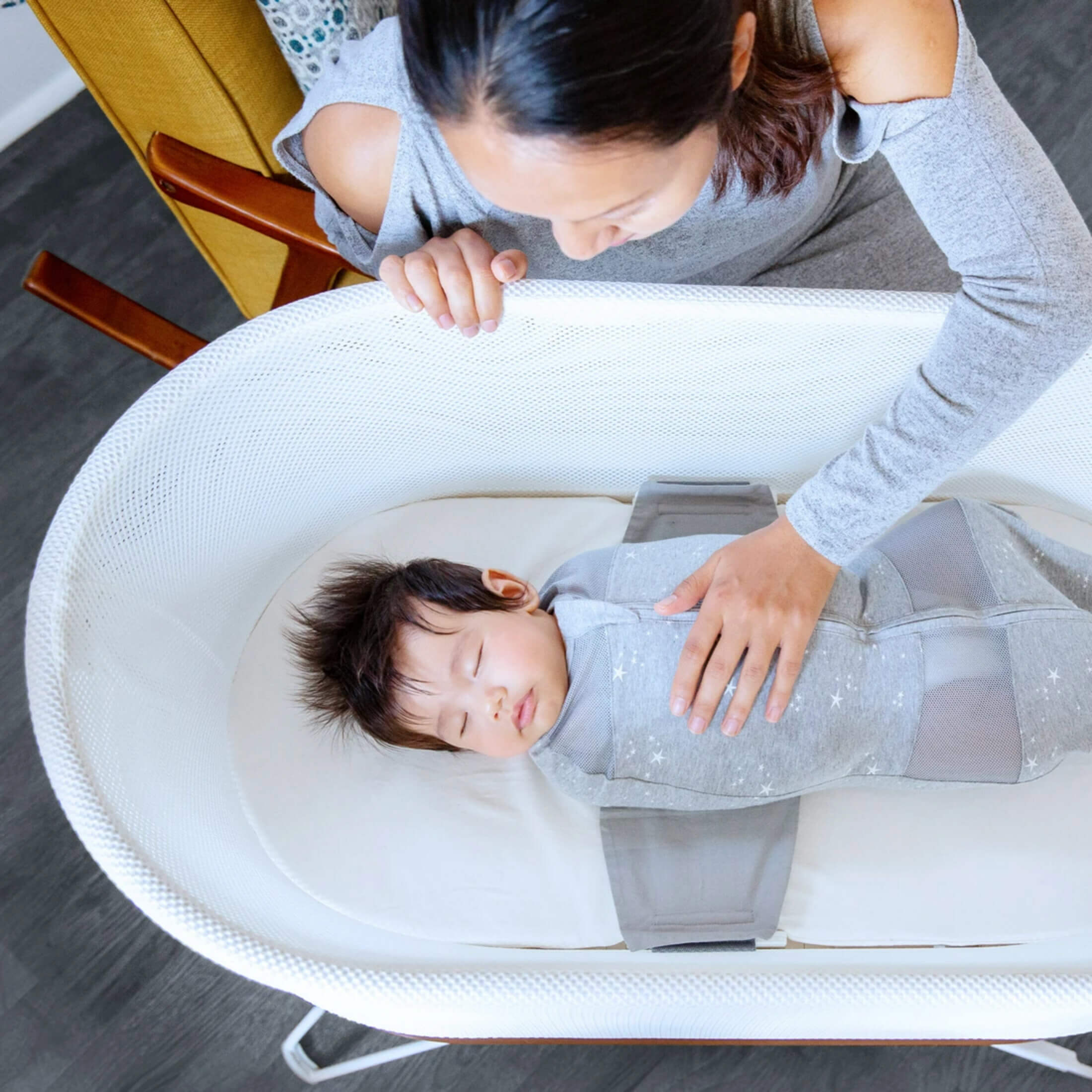Dim the lights—a lot!

SNOO by Dr. Harvey Karp HAPPIEST BABY
Baby steps are key to making “fall back” easier on you and your child
Back before becoming a parent, the end of daylight saving time in the fall meant gaining an extra hour of sweet, sweet sleep! But with kids, any change in the normal sleep routine can bring parents a shiver of fear!
“Twice a year, parents dread preparing their children for daylight saving time. And that’s understandable,” says pediatrician, best-selling author of the #1 parent guides, CEO Happiest Baby and creator of SNOO, the first and only baby bed to receive FDA De Novo Authorization for its ability to keep sleeping babies safely on their backs. “But the reality is, whether you plan ahead to smooth out the time change, or not, you will get through this small bump in the road to Sleepytown.”
Here are some of Dr. Karp’s insights on handling the end of daylight saving time—whether you’re a week out, two days out, or if “fall back” has already happened!
How long does it take kids to adjust to daylight saving time ending?
For most kids—and grownups!— it usually takes about a week to fully adjust to the new time.
How can I help my child adjust to daylight saving?
Baby steps are key to making “fall back” easier on you and your child! The best tip is—every evening for 3 to 4 nights before you change the clock—to shift your child’s dinner and bedtime routines forward about 15 minutes, so they are not dealing with a whole hour change all at once. And, after the change, try to get a few hours of outdoor sunlight…every day! This helps a ton to reset your child’s inner clock.
What does gradually shifting bedtime look like?
This year, the end of daylight saving time falls on Sunday, November 5. So, a few days beforehand, start gradual routine changes. If your child’s bedtime is normally at 8pm, this is how you adjust:
Wednesday, November 1: 8:00pm bedtime
Thursday, November 2: 8:15pm bedtime
Friday, November 3: 8:30pm bedtime
Saturday, November 4: 8:45pm bedtime
**Clocks “fall back” 1 hour at 2am!**
Sunday, November 5: 8:00pm bedtime
Will an OK-to-wake clock help my child adjust to the time change?
Yes! OK-to-wake clocks can be a great sleepytime tool to gently ease little ones into a time change. For example, SNOObie Smart Soother allows caregivers to use light and sound to help cue your tot that it’s time to settle down and prepare for sleep…and when it is time to rise and shine. Here are some SNOObie daylight saving’s tips:
Set your bedtime routines for 15 minutes later (following the schedule mentioned above). Program SNOObie with your choice from 12 specially designed sleep and soothing tracks, including classic lullabies, beloved SNOO sounds, and more. (You can program up to four routines at a time.)
Before bed, set SNOObie’s nightlight to a dim but warm color, like rust or honey orange, which encourages the natural release of melatonin, the brain’s sleepytime hormone.
For little ones who need help understanding when it’s okay to get out of bed, use SNOObie as an OK-to-wake clock. Set SNOObie to change its color to green and to play a specific sound in the morning to give your little the signal that they can pop out and start the day. This can be super-helpful during confusing daylight saving time…especially for kiddos who are too young to read a clock.
Should I dim the lights to help with the time change?
Yes! Whether you prepared for daylight saving or not, dim the lights—a lot—about 45 minutes before bedtime. This helps with starting the wonderful nighttime melatonin release, too. To further set the stage for sleep, shut off all screens (TVs, computers, etc.) at least 45 minutes before lights out. These devices release a lot of blue light…which blocks the release of melatonin.
How can I help my child adjust to daylight saving if I didn’t prepare in advance?
If you completely forgot about daylight saving—or simply did not have the time or energy to prepare, don’t worry—you can decide to adjust on November 6th! Simply do the gradual steps of shifting your child’s bedtime after the rest of the world has done their change. (If your child has an easygoing temperament, two days of 30-minute routine shifts can often be just the thing to help them adjust.)
Finally, whether you’ve got a baby or a big kid, take them outside in the morning…and stay out and have fun as long as you can!

Best-selling author, creator of SNOO, the FDA recognized safe sleep baby bassinet – Dr. Harvey Karp
That’s because:
Toddlers and older children burn lots of energy when they are outside. As you can imagine, that can help them sleep better in the evening.
Exposure to morning sunlight lowers the production of the sleep hormone, melatonin, which helps reset a child’s internal clock so they have an easier time going to bed at the new, right time.
